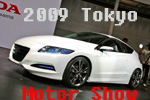2012 Mercedes-Benz CLS550
 Mercedes-Benz has a long history of setting trends, which includes being the first company to develop technologies we take for granted today, like traction control systems, airbags and anti-lock brakes. It also kicked off the trend of propelling vehicles with motors, having built and sold the first automobile back in 1885. But it's not usually known for setting styling trends, which is exactly what the company did when it launched the CLS-Class back in 2004.
Mercedes-Benz has a long history of setting trends, which includes being the first company to develop technologies we take for granted today, like traction control systems, airbags and anti-lock brakes. It also kicked off the trend of propelling vehicles with motors, having built and sold the first automobile back in 1885. But it's not usually known for setting styling trends, which is exactly what the company did when it launched the CLS-Class back in 2004.
Despite four doors staring you right in the face, the CLS was officially dubbed a coupe by Mercedes because of the car's sleek coupe-like roofline. Semantics aside, it kicked off an entirely new segment of four-door coupes with its new, artful approach to transporting four people. Just like a fledgling industry followed the Benz Patent-Motorwagen's arrival in 1885, the arrival of the CLS created an entirely new class of vehicle.
Having started the trend, Mercedes gets to show us how it will evolve, and the 2012 CLS550 does just that. It's job isn't just to steer this trend away from becoming a fad, but also fend off a growing number of automakers who wish they had thought of it first.
The first-generation CLS was widely considered a beautiful design, almost shockingly so compared to how the brand was shaping its four-doors back in 2004. If you're a fan of that original design, you probably wouldn't have minded if Mercedes left the exterior alone. Alas, seven years is a long life cycle for any product, and Mercedes can't be faulted for putting pen to paper. The question is whether or not its designers succeeded in making the new CLS more attractive than the old one.



The Autoblog team is not unanimous on the answer. There's no one among us who believes either generation is punishment on the eyes, and so either opinion can be held without considering the other side a bunch of tasteless boobs. Your author, however, finds himself on the side of Team First-Gen, so I'll do my best to explain why I think the original is still the better looker of thee two sedans, err... coupes.
Let's start with some analogies. The first-generation CLS is like a man wearing a fitted tuxedo: formal, sharp and clean. The second-gen CLS is like Lou Ferrigno after he beat up the first man and put on his tuxedo: bigger, bulging and intimidating. Now let's get more technical. From the side, the first-gen CLS is expressed by two basic strokes of the designer's pen: an elegant arch for the roofline and a subtly bowed crease that runs from front fender to taillight above the door handles. The second-gen CLS retains the arching roofline, but is growing a crease farm on its doors. The first-gen's simple single line has been replaced by upper and lower ones that start at the front wheel and get closer together as you move rearward, and a third crease bends over the rear wheel to create a flared fender into which the first two end. Together they create a concavity across the doors that makes the rear fenders look even more pronounced. Coupled with a near vertical grille and taller hood, the second-gen's look is more convoluted and just a bit too butch.




The aesthetic, however, happens to fit, because if you didn't know, Mercedes-Benz makes muscle cars. Its V8s make us swoon, even the ones not stamped with the letters A-M-G. Known for their large displacements, high horsepower and bellowing exhaust tones, these engines – the 5.5-liter and 6.2-liter AMG specifically – are on their way out across the brand's lineup. Sad as we are to see them go, new emissions and fuel economy standards, not to mention gas prices, make it a must. Their replacements are two new smaller V8s – a 4.6-liter for 550 models and a 5.5-liter for AMG versions, both featuring twin turbochargers and direct injection to replace the lost displacement (it can be done!).
The new CLS550 retains its nomenclature despite housing the new 4.6-liter V8, which while smaller in size produces 402 horsepower at 5,000 rpm and 443 pound-feet of torque at a low 1,800 rpm – big improvements over the larger 5.5-liter V8 it replaces, which continues to make 382 hp at 6,000 rpm and 391 lb-ft at 2,800 rpm in other models. The new engine is also significantly more efficient, with improvements of three miles per gallon in the city and four mpg on the highway for new scores of 17 city / 25 highway. We actually experienced a fuel consumption rate in the high 20-mpg range during a long highway trip, which is exemplary for an engine making 400+ horsepower. This new V8 is one area where we're all playing for Team Second-Gen.

The interior, likewise, is a big improvement, though mostly in the area of materials, which are of a higher quality than the first generation, especially the convincing metal air vents. Ergonomically the cabin looks like most other Mercs, and even much like last year's car with just the elements rearranged. The seven-inch navigation screen has been moved to the very top of the center stack, replacing a pair of vents that now appear below the screen and flank a tasteful analogue clock. The climate controls, which used to be near the top, are now at the very bottom, though laid out in the same way as before with dual rotary knobs and easy-to-press buttons. There's also a new, larger 4.5-inch circular display in the center of the speedometer that gives you access to most of the vehicles high-tech features and functions. Navigating the menus is simple via steering wheel-mounted controls, and there are a lot of them that let you to do everything from change the color of the interior's ambient lightning to turn off the traction control system.
Conspicuously absent is a gear shift of any kind to move the car's seven-speed automatic transmission from P into D. In its place is the COMAND system control knob that operates the navigation, audio, phone and various other vehicle systems. Whether or not you like it depends largely on whether you prefer touch-screens to controller-based interfaces, but we were able to figure it out without cracking a manual and the knob falls to hand without taking your eyes off the road.




This begs the question, how do you put the seven-speed transmission into Drive? By using one of three stalks sticking out of the CLS' steering column. The gear selector stalk is on the right side by itself, and using it brings back memories of the column-mounted shifter in my dad's old truck. It's all digitally controlled now and lacks the mechanical feel of the old days, but the muscle memory of reaching up and pulling down to get in gear is still there. The two left-side stalks, meanwhile, are a bane of modern Mercedes interiors. The smaller one on top controls the adaptive cruise control system, while the bottom one does turn signals and headlights. Most people, however, will instinctively grab the top stalk by accident when signaling a turn. Mercedes has finally begun fixing this problem by switching the stalks' positions beginning with the 2012 ML-Class. Unfortunately, the also-new 2012 CLS missed the cut.
The new CLS gets higher marks for its Active Multicontour Driver's Seat. In addition to the standard 14-way seat controls near the door handles, this $660 option adds another set of controls between the driver's seat and center console that adjusts lumbar supports, side bolsters and shoulders supports, as well as activates a massage function for working out the kinks on longer trips. It also adds active side bolsters that, when activated, dynamically move in to keep you from sliding during turns. They come in handy on sweeping turns, especially highway exit and entrance ramps, where lateral g-forces can last longer. However, we wish the system didn't respond below a certain speed; who wants their sides pinched when they're prowling for a parking spot?
A fancy driver's seat is just one of many stand-alone and packaged options offered for the CLS550, which starts at $71,300 with an $875 destination charge. This particular model tops out at $84,545 as tested, which is a big difference, but not so shocking when you see what you get. For starters, the CLS comes with the $4,390 Premium 1 Package that includes popular options like a rear-view camera, iPod interface, heated and cooled front seats, keyless entry and a power-closing trunk. Its best component, however, is the world's first pair of all-LED active headlamps on a production car, an honor shared with the 2012 Audi A6 that also offers a set.
Next up is the Driver Assistance Package for $2,950 that includes Active Blind Spot Assist, Active Lane Keeping Assist and Mercedes' adaptive cruise control system called DISTRONIC PLUS with PRE-SAFE Brake. Many cars today have warning systems to alert drivers when they drift out of a lane, but the Mercedes system gets into the game by actively braking the opposite side of the vehicle to bring the car back between the lines. The adaptive cruise control is also at the head of the class for being able to apply full braking force and bring the CLS550 to a complete stop if needed. Our tester is also loaded with the Wheel Package for $760 that adds 18-inch AMG five-spoke wheels, an AMG steering wheel and a manual mode for the transmission, as well as stand alone options like the PARKTRONIC auto-parking system ($970), split-folding rear seats ($440) and rear side airbags ($420).




The last bit of bleeding-edge tech in our tester is the Night View Assist PLUS system, which is the most expensive stand alone option at $1,780. More of a showpiece to impress the Joneses, it uses infrared beams to display a black-and-white high-resolution video feed of what's ahead of you in the dark. It can even identify people and highlight them. The feed appears in the nav screen, so you have to avert your eyes from the road to watch it, but it does work as advertised and might come in handy if a jealous Mr. Jones takes a baseball bat to your all-LED headlights. Watch the Short Cut video above to see it in action.
All of those options are nice, but what about what's beneath them? First and foremost, the CLS550 is a luxury car of the highest order with an AIRMATIC semi-active suspension that supports a three-link independent front suspension and multi-link rear. There's no slop in the ride, body motions are controlled and you can dial in the system even more by choosing either Sport or Comfort mode. We wish the Sport mode were a little more aggressive, as body lean remains distinctly noticeable even with it on. We have no qualms with the electromechanical power-assisted rack-and-pinion steering, and the 14.2-inch front brakes clamped by four-piston calipers and 12.6-inch rear discs with single-piston calipers make stopping this 4,158-pound four-door a drama-free affair.

What's curious about the new CLS550 is that it's still a muscle car putting on airs. Every electrical nanny is there to keep you and the 402-hp V8 in check, and with all of them turned on, there's a thick buffer keeping the two of you from collaborating. We found the transmission and traction control system to be the most oppressive. The transmission does give you three shift modes: Economy, Sport and Manual. Shifts happen early and often in Economy mode, while Sport mode gets the transmission moving quicker and holding gears longer, and Manual mode takes advantage of the paddles on the back of the steering wheel. We suggest the latter for what feels like the quickest shifts, but chances are you'll spend the most time in Economy mode where the car is most efficient, and in this mode, the CLS550 feels like a race horse that isn't allowed to leave the gate.
The key to flexing the CLS550's muscle is activating the Sport suspension and Manual transmission modes and turning off the traction control system (along with all of the other nannies that beep and flash). With those steps taken, the CLS550 feels more like something from Mopar than Mercedes, willing at a moment's notice to paint the pavement with rubber. After experiencing the CLS550 this way, the manufacturer's claimed 0-60 mph time of 5.1 seconds becomes much more believable. And though the new 4.6-liter doesn't sound quite as deep and rich as the last generation's 5.5-liter, it still burbles and vibrates more than the eight-cylinders in most other luxury cars.

And maybe that's because the CLS550 just isn't a luxury car, or at least doesn't want to be with such a strong, athletic engine. So much effort goes into subduing the V8 that Mercedes could have just as easily offered a V6-powered model, a CLS350, that wears the luxury moniker more willingly while also being more efficient. Maybe we'll soon see one here in the U.S., not to mention a diesel-powered BlueTec variant. Europeans can already have their CLS any they want it, so hopefully it's just a matter of a suit somewhere saying 'yes.'
Even with a split personality, the second-gen CLS is superior in almost every way to the original, maybe every way if you prefer its design. And like every trend setter, it's now surrounded by variations on the theme – some quicker, some sexier and some more serene. Mercedes, however, has successfully kept the CLS their target, and thanks to this wonderful engine, it's a moving one.















